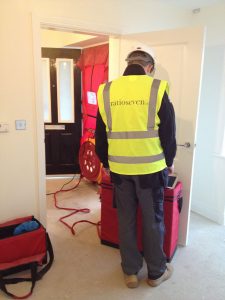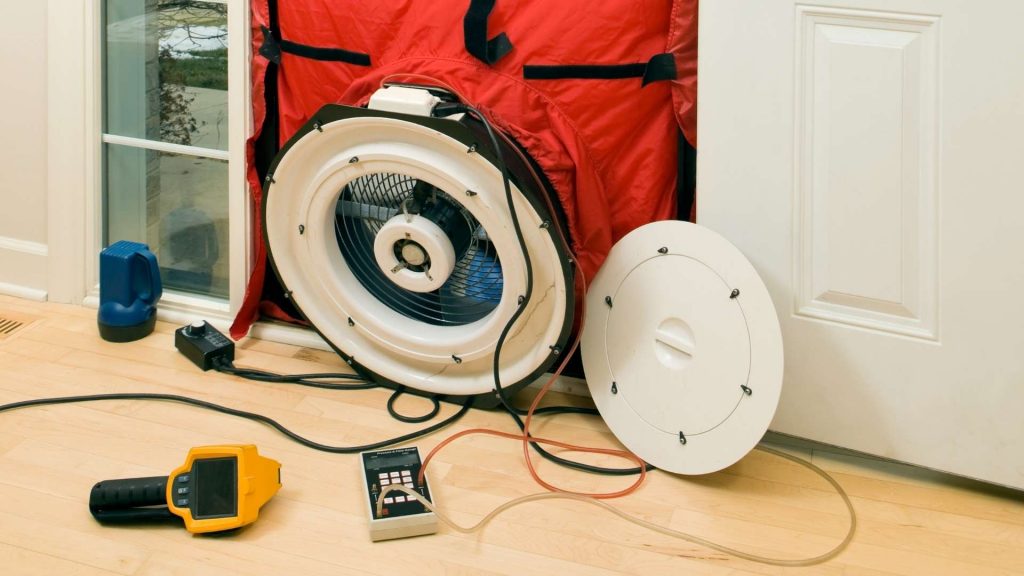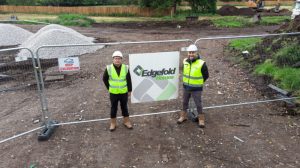Do I need an air test?
Why do I need an air test? Firstly, air testing ensures that the Design Emission Rate (DER) is below the target emission rate set by the building regulations. It also makes sure that the building is energy-efficient. Government and building regulators are making commitments to cut carbon emissions.
Part L, a method for conserving power and fuel in buildings, is another important tool. In fact, the built environment contributes 50% of the world’s carbon emissions.
There are regulations regarding air testing and the regulations can seem confusing. However, there are some dwellings that do not require it. This is because of SAP Calculations.
These calculations measure the energy performance of the building. The key aspect in calculating energy efficiency is air tightness and air permeability, the amount of air that leaks through the building. You should also check the air tightness of the building’s windows and doors.
In addition, air testing helps the building’s energy performance. A building that is poorly air-tight will lose heat and suffer from cold draughts. This makes an air test an essential part of the building’s energy efficiency and cost-efficiency. It’s worth a few pounds to avoid wasted man-hours. This will also save you money on your energy bills. The benefits of air testing outweigh any costs and hassles.
Why is Air Testing Important?

New developments in the UK must be tested for the quality of indoor air before they are completed. Part L1A, which specifies the level of air quality in domestic buildings, is the part of Approved Document L that is used in the construction process. The final air test is completed prior to the occupier moving in, and it ensures that the property complies with current Building Regulations and standards. The results of an air test are used in the calculation of SAP and SBEM for a building, and this has an impact on its overall energy rating.
Buildings that leak air are not only uncomfortable for occupants, but they are inefficient for energy use and emissions. Proper air tightness is essential to a building’s energy performance. Uncontrolled ventilation and air leakage can cause high heating bills and cold drafts. Therefore, air testing is essential for energy efficiency and to reduce energy costs. Air testing is performed by registered air testers. Air tightness certificates can make a building more attractive to potential buyers.
Air pollution can affect the lungs and cause cardiovascular disease. Some air pollutants can even lead to death within a few hours. If your home has poor air quality, you must test it regularly. Even if you don’t have allergies, you should take steps to improve it. Air testing allows you to make informed decisions about how best to protect your health. When you know the air quality in your home, you can decide which air filtration system is right for you.
When is the air tightness test carried out?
Generally, all new buildings must have air tightness tests. The tests are a key part of building regulation Part L, section 1A and 1B. Having your building tested will allow you to make sure that it meets these regulations and also reduce energy costs. In addition, air tightness tests can be extremely valuable in identifying leaks that may have been hidden. Here are some tips on when to get an air tightness test for your building:
Which properties need air tightness testing?
In order to pass the air tightness test, all properties must be sealed. The air pressure test is the final survey that is required after all the building envelopes have been sealed. The test is conducted by a professional company, which will perform the inspection in accordance with current regulations. Once the test has been completed, the properties must be inspected and the results analysed. If the test results are poor, the owners must make repairs to make them pass the test.
Air Testing in Whitchurch, Shropshire
Air leakage tests are needed in all types of buildings, from new builds to existing properties. In order to pass the test, properties must have proper sealing of their doors, windows and skirting boards. Water traps must be filled and penetrations should be sealed. You can follow a checklist provided by the company to make sure that your property passes the test the first time. This checklist is detailed and provides an in-depth list of requirements.
Aside from air leakage, the test will also measure the amount of conditioned air that is being lost inside a building. Air leakage is also known as air pressure. If there is more than one leak in a room, it is possible that the home will feel colder than it actually is. When this happens, can call Ratio Seven, air tightness specialist in Whitchurch, Shropshire.
Air Tightness Testing for Dwellings in Whitchurch
If your home is not air tight, it’s time to get it tested! Air tightness testing is required by the Building Regulations for new developments. As part of the building regulation process, it is a vital step in achieving compliance with the latest Building Regulations. If the test results are poor, you could be penalised by the Building Regs. If you want to avoid this penalty, make sure your house has an air tightness test before moving in.
Air tightness testing, also called air pressure testing, measures the amount of air that leaks through the fabric of a building. By reducing air loss, we can make our homes more energy-efficient. The government has also started to mandate air tightness testing as a way to reduce carbon emissions and improve energy efficiency in our homes. To get started, contact us – we are your local air tightness tester near you in Whitchurch, Shropshire to book a test.
When a building passes air tightness testing, the building is certified to meet UK government standards. In the UK, the maximum Air Permeability is 10 m3h-1m-2, so new dwellings need to achieve five m3h-1m-2 or less. A reading of three to five m3h-1m-2 is acceptable for new buildings, but if the reading is below that number, it may be too airtight.
Air Tightness Testing for Commercial Buildings
Air tightness tests are a legal requirement for new buildings. They are used in SAP calculations and a lower air test score means a higher EPC rating. Buildings without the test are penalised with a default score. It’s therefore imperative that any new building undergo air tightness testing before starting construction. Here are some tips to help you choose the right air tightness tester.
To improve the energy efficiency of your building, you must conduct an air tightness test. Air tightness testing can help reduce air leakage, thereby reducing uncontrolled air infiltration and increasing occupant comfort. It can also reduce running costs. The Ratio Seven engineers have been testing buildings since 2008 and are fully conversant with common areas where air leakage occurs. Thermal image cameras can be used to determine areas of the building that are particularly susceptible to air leakage.
New commercial buildings need to be air-tight to save energy and lower their energy bills. Air-tightness testing can help you comply with the latest regulations and save you money in the long run. The results of the tests can be compared with those of previous air-tightness tests. It’s also easy to convert between air tightness and EPC ratings, which helps you determine if your building is truly energy-efficient.
How is an Air Pressure Test Performed?
An air pressure test is a mandatory part of the Building Regulations for new build properties in England and Scotland. The purpose is to make sure the building meets a specified air permeability rating. Air pressure is an important aspect of energy efficiency and is a part of the design process of new buildings. To perform an air pressure test, all windows and doors in a building must be shut. A site preparation checklist is provided by Ratio Seven.





